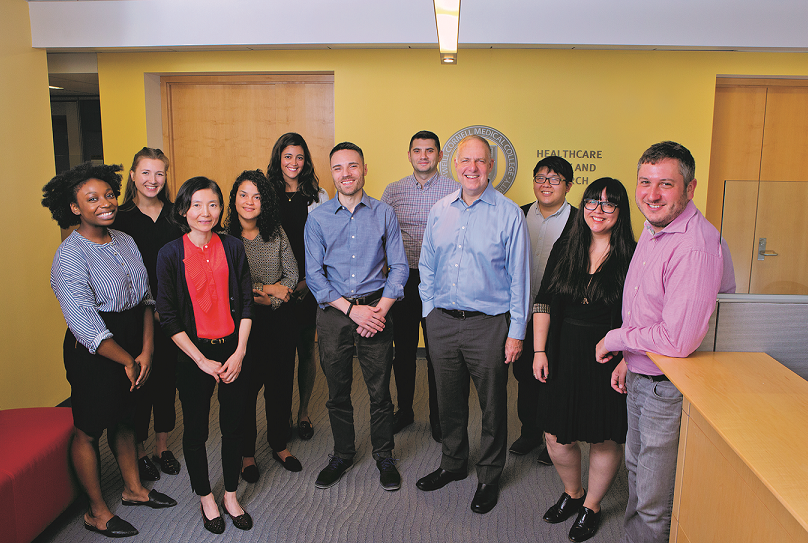By now, many people are familiar with the grim statistic that opioid overdoses are killing more than 115 Americans every day. But the ongoing crisis has another toll, one that’s less talked about but still highly damaging to society: a financial cost of $78.5 billion per year, including nearly $29 billion to cover substance use disorder treatment and related healthcare. At Weill Cornell Medicine, researchers in the field of health economics work to find solutions to this crisis by developing interventions that save lives while remaining economically feasible—aiming to help people with substance use problems by encouraging policymakers to support initiatives that effectively treat addiction and prevent overdoses.
Historically stigmatized, substance use disorder has only recently begun to be seen as a chronic disease. But states may hesitate to invest in treatment unless doing so will save taxpayer dollars in the long run. “In the United States, we are starting to care more about treating people with substance use disorder and realizing that we need to use scientific approaches—but resources are constrained, and resources to spend on people who are stigmatized are unfortunately even more constrained,” says Dr. Bruce Schackman, the Saul P. Steinberg Distinguished Professor of Healthcare Policy and Research. “So we need to make sure we are getting the biggest bang for our buck.” Dr. Schackman is director of the multi-institutional Center for Health Economics of Treatment Interventions for Substance Use Disorder, HCV, and HIV (CHERISH) funded by the National Institute on Drug Abuse. Established in 2015 within the Department of Healthcare Policy & Research, it does health economics research that’s aimed to inform policymakers on the bottom-line realities of substance use disorder treatment, as well as of hepatitis C and HIV care for people who use drugs.
One recent project looked at ways to increase access to naloxone, a life-saving prescription medication that reverses the effects of opioid overdoses. Currently, it can only be obtained from pharmacists, which limits its reach. Making naloxone available over the counter could save lives—but it might increase consumers’ out-of-pocket costs if insurers subsequently refuse to cover it, or if manufacturers raise the price. To estimate how making naloxone available over the counter would affect sales, CHERISH parsed data on pharmacy sales of naloxone, and studied shifts in price and demand for nicotine gum and patches—products to curb substance use that have switched from prescription-only to over the counter. The study’s lead author, Dr. Sean Murphy, associate professor in the Department of Healthcare Policy & Research, notes that the researchers found that consumers were unlikely to be price-sensitive when it comes to naloxone. They also found that sales would grow by between 71 and 171 percent, says Dr. Murphy, who directs the CHERISH Consultation Service, which helps scientists incorporate economic analyses into studies on substance use.
A current CHERISH project involves syringe exchanges—sites where people who use drugs can obtain sterile syringes and receive other services. Researchers are examining the potential benefits of incorporating medical care and substance use disorder treatment into the exchange programs. “The idea is that if they are receiving services onsite, they may be less likely to go to an emergency room or be hospitalized,” Dr. Schackman says. “So that could save the system some money as well as improve quality of life.” Another advantage, he notes, would be the opportunity to treat hepatitis C infections, whose recent increase has been linked to the opioid crisis, and thus prevent their long-term health effects—again reducing healthcare costs while potentially saving lives.
CHERISH staff also help investigators from other research institutions; for example, Dr. Schackman and colleagues assist researchers in calculating the cost of implementing substance use disorder treatments in real-world scenarios. In addition, the center connects researchers with policymakers, so scientists can develop studies that take financial considerations that policymakers care about into account. But Dr. Schackman says that CHERISH’s ultimate goal is to destigmatize substance use; although the public perception of addiction as a moral failing has changed to some extent, the view continues to linger. “We want to change hearts and minds,” says Dr. Schackman, “so people realize that this is a medical condition.”
— Agata Blaszczak-Boxe
This story first appeared in Weill Cornell Medicine, Fall 2018

